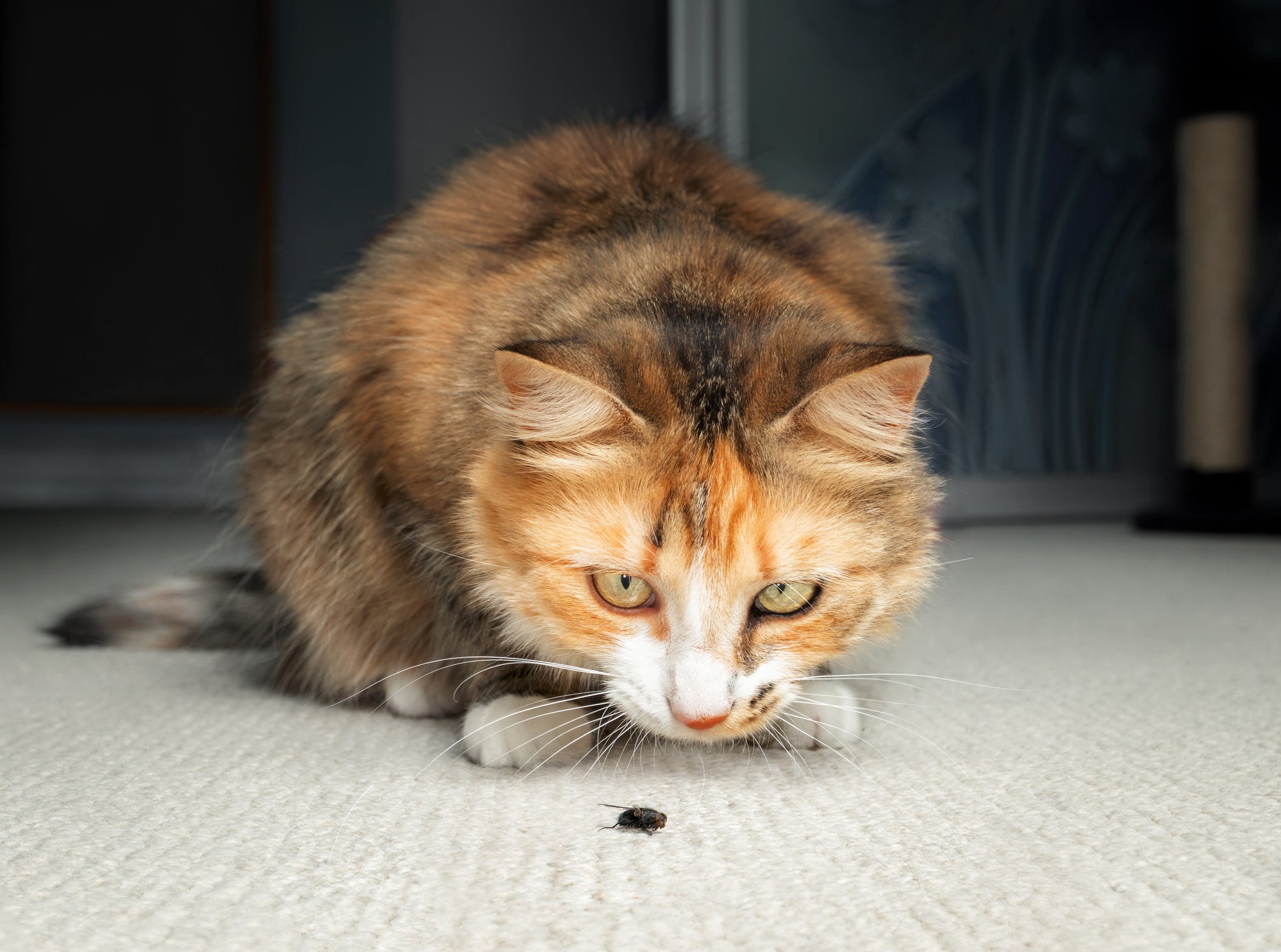Have you ever wondered if your cat could be a cold-blooded killer?
Perhaps it was the way they stalked you from the top of your refrigerator or how quick it took them to go from rubbing up against your leg to biting it.
Well, scientists have collected more than 17,000 social media photos and videos that prove domestic cats are — specifically, killers of insects.
To identify which bugs these cats target most often, the Brazilian researchers analyzed 550 attacks captured in the data. They found that the majority of cats’ prey were grasshoppers, cockroaches and “true bugs,” like cicadas, aphids and invasive spotted lantern flies.
“The most exciting aspect of our research is that we were able to use social media data to reveal an impact of domestic cats on biodiversity that has been relatively overlooked by the scientific literature,” University of Campinas student Leticia Alexandre said in a statement.

The images and videos were taken from the online photo- and video-sharing platforms, iStock and TikTok.
The researchers found that 20.7 percent of the records of attacks were related to grasshoppers, 14.5 percent to true bugs, 14.4 percent to cockroaches, 11.5 percent to moths and butterflies, 9.1 percent to beetles, 8.5 percent to bees, wasps and ants and 7.2 percent to dragonflies or damselflies.
Attacks on flies and preying mantises were recorded, but less frequently.
The researchers said that cats can easily consume crunchy grasshoppers because of their large body size and wide distribution around the world. Found on all continents but Antarctica, about 400 grasshopper species are native to North America and they’re found throughout much of America’s West.
The scale of cat attacks, including how many bugs killed each year in the U.S. and around the world, remains to be seen. However, domestic cats are known to kill billions of mammals and birds in North America per year. Some 2.4 billion birds are killed by cats in the contiguous U.S. each year, as well as 12.3 billion small mammals, according to a 2013 U.S. Fish and Wildlife Service study.

Although a single pet cat doesn’t attack as many animals as a wild cat, it may kill between two and 10 times as many animals as other similarly-sized wild predators in an area of 100 square meters, researchers told Scientific American in 2020.
That spells trouble for Earth’s insects, which are already threatened by habitat loss, climate change, pollution and out-competition from invasive species.
While more research is needed to understand the scope of the threat and the cats’ impact on specific species, the researchers say their results indicate a new area that could help eco- research going forward: viral cat videos.
Past attempts to track killing cats faced logistical issues posed by owners and cameras attached to cats’ collars could only capture so much.
“Our findings indicate that social media records, which are becoming increasingly abundant and widespread worldwide, can serve as valuable allies in providing essential data to tackle this challenge,” the scientists said.


